Mutual Exclusion In Distributed System
Mutual exclusion in distributed system. Extending this definition to distributed systems entails that processes are situated on different machines connected by a network. The hierarchical structure is not rigid and can be modified to achieve different performance criteria. This thesis studies the use of voting mechanisms as a tool to achieve mutual exclusion in distributed systems.
Message passing is the sole means for implementing. Message passing is the sole means for implementing distributed mutual exclusion. Specifically quorum-based algorithm is a more prefer choice for solving problem in async system.
Mutexes work within a single system because the necessary constructs are in place to guarantee exclusivity. Distributed Mutual Exclusion è No Deadlocks no set of sites should be permanently blocked waiting for messages from other sites in that set è No starvation no site should have to wait indefinitely to enter its critical section while other sites are executing the CS more than once. Mutual exclusion ensures that concurrent access of processes to a shared resource or data is serialized that is executed in a mutually exclusive manner.
Mutual exclusion is a property of process synchronization which states that no two processes can exist in the critical section at any given point of time. Distributes mutual exclusion Distributed systems Lec-58 Bhanu Priya - YouTube. As an example consider a system that manages replicated data.
Concurrent access of processes to a shared resource or data is executed in mutually exclusive manner. A network partition can break a distributed computing system into groups of isolated nodes. In the event of a network partition the system is divided into isolated groups of nodes.
TAITA TAVETA UNIVERSITY ICS 2403. Additionally what is mutual exclusion in distributed operating systems. We study and formalize these mechanisms in three basic scenarios.
Most distributed mutual exclusion algorithms use time stamping to provide fairness in the system. Distributed transactions are transactions that span multiple database servers which as well are.
Communication in data networks b.
As an example consider a system that manages replicated data. In a computer system centralized or distributed there exist resources that are shared between multiple processes. Mutual exclusion is a property of process synchronization which states that no two processes can exist in the critical section at any given point of time. Any process synchronization technique being used must satisfy the property of mutual exclusion without which it would not be possible to get rid of a race condition. TAITA TAVETA UNIVERSITY ICS 2403. Is proposed in which processes communicate by asynchronous. Specifically quorum-based algorithm is a more prefer choice for solving problem in async system. Communication in data networks b. Concurrent access of processes to a shared resource or data is executed in mutually exclusive manner.
There are three basic approaches for implementing distributed mutual exclusion. Most distributed mutual exclusion algorithms use time stamping to provide fairness in the system. Mutual exclusion is a property of process synchronization which states that no two processes can exist in the critical section at any given point of time. As an example consider a system that manages replicated data. Specifically quorum-based algorithm is a more prefer choice for solving problem in async system. Where there is a single conflicting type of. Distributed Mutual Exclusion è No Deadlocks no set of sites should be permanently blocked waiting for messages from other sites in that set è No starvation no site should have to wait indefinitely to enter its critical section while other sites are executing the CS more than once.














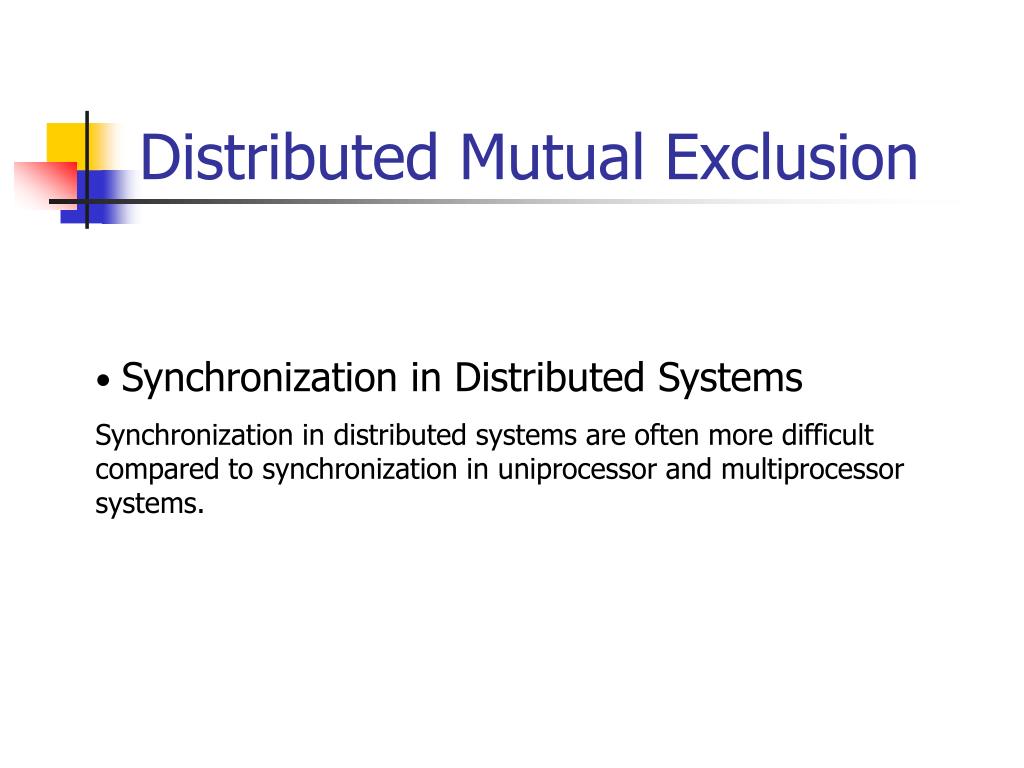

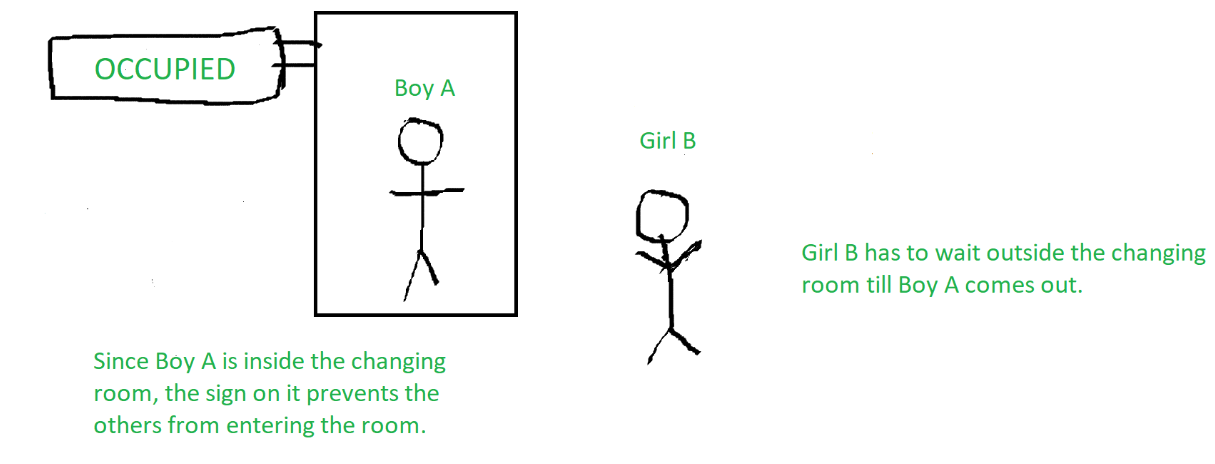
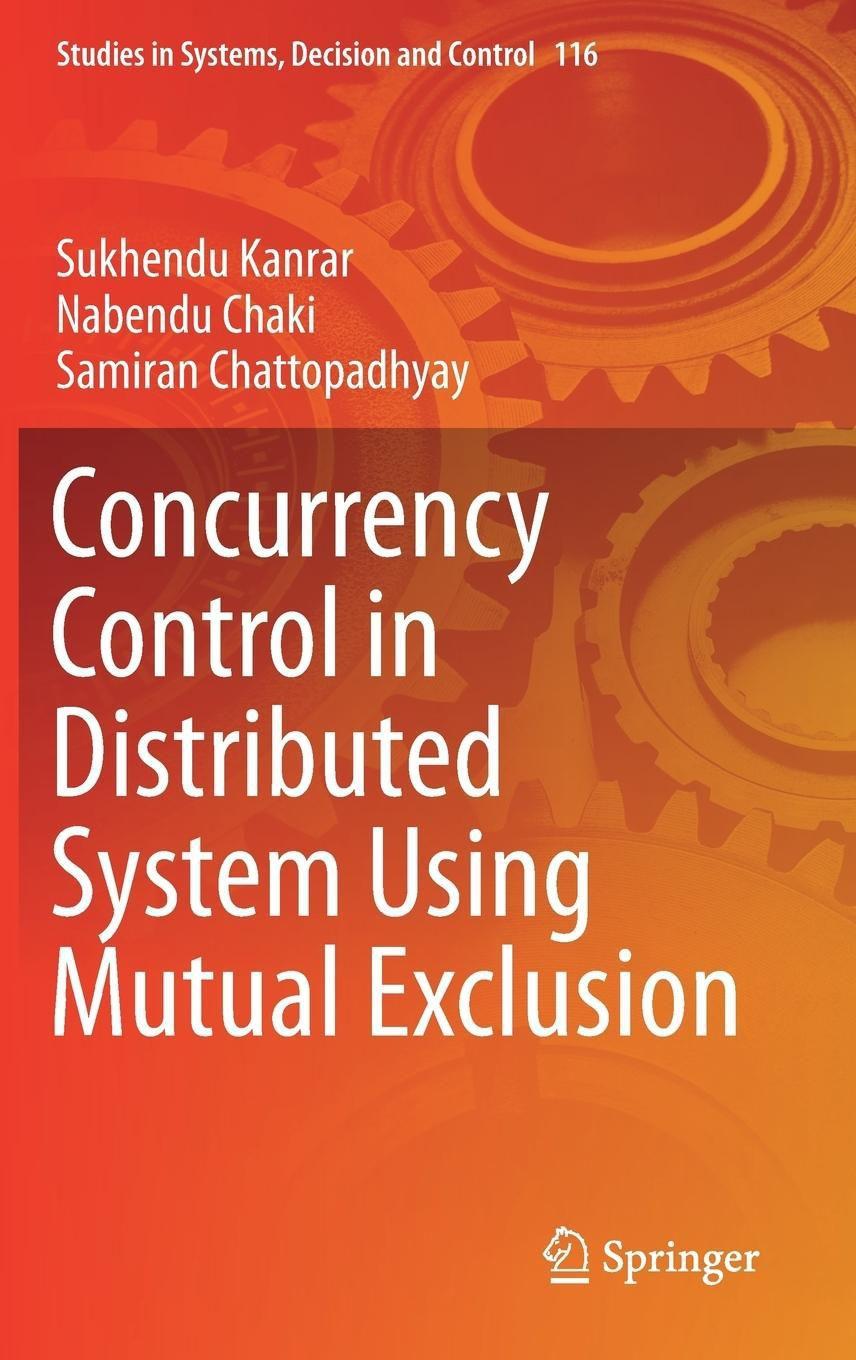

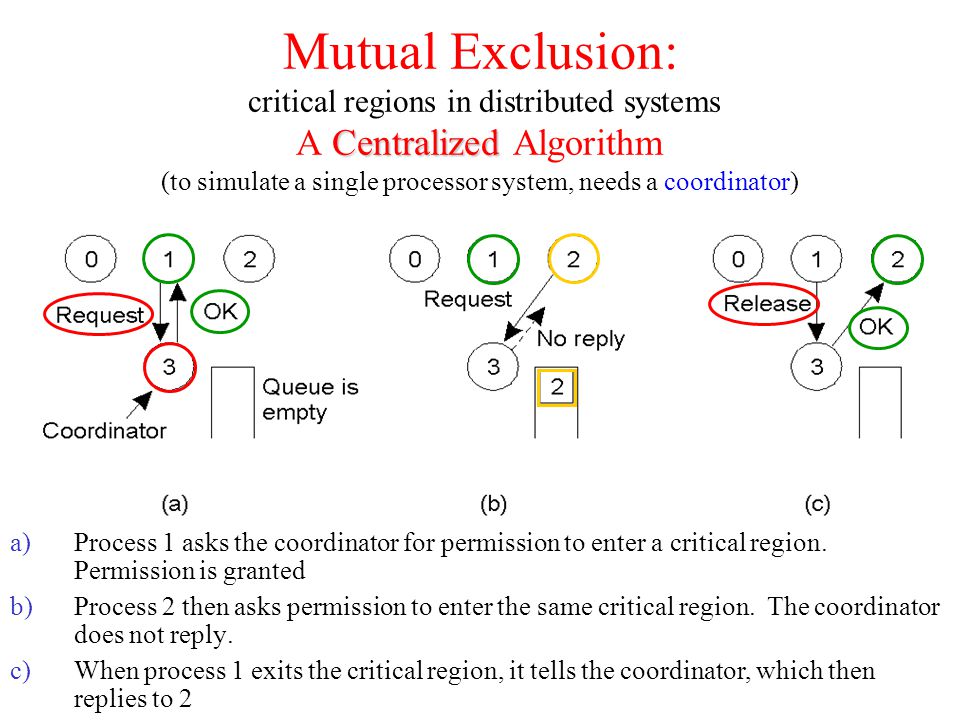

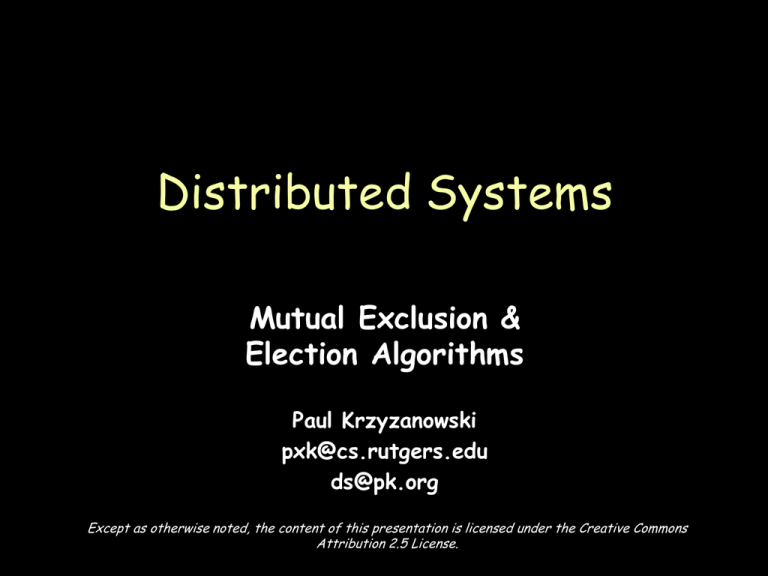




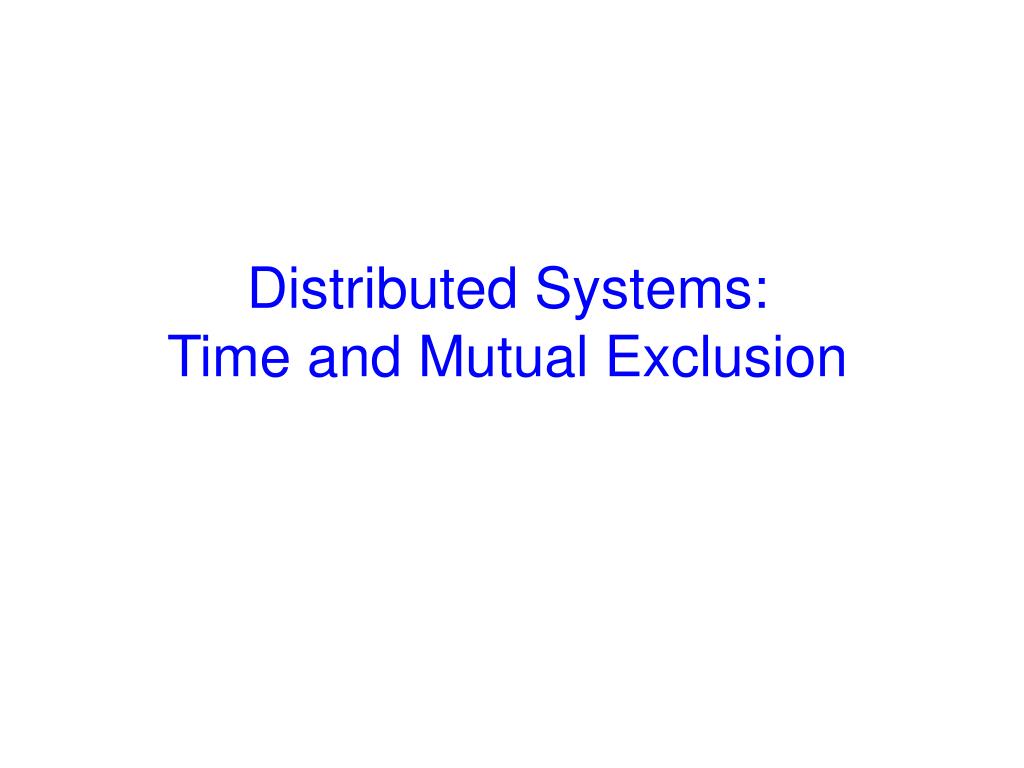









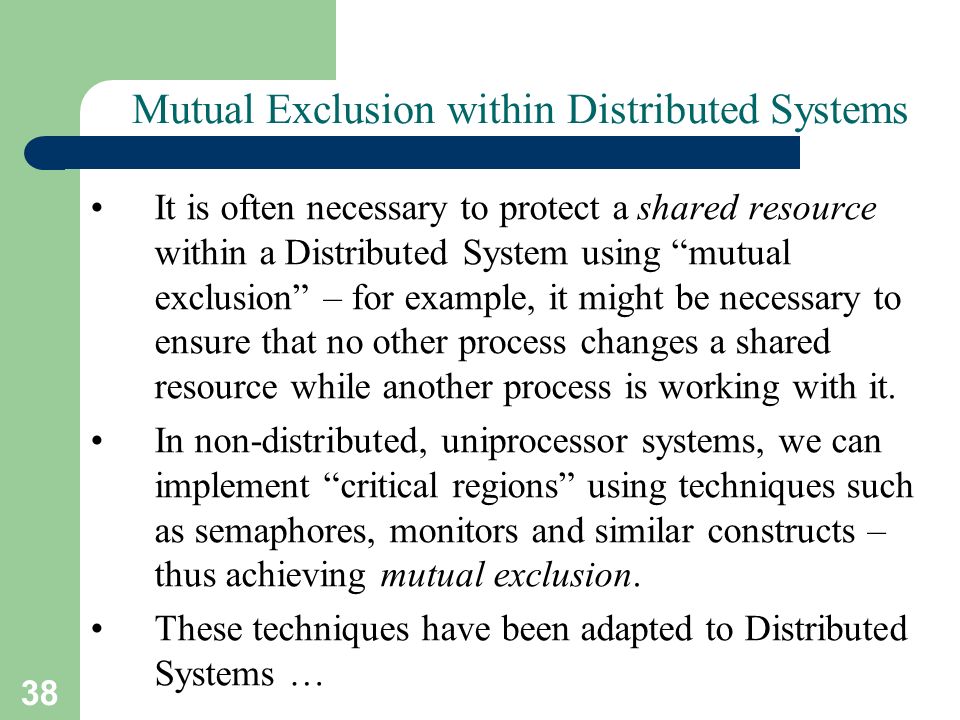
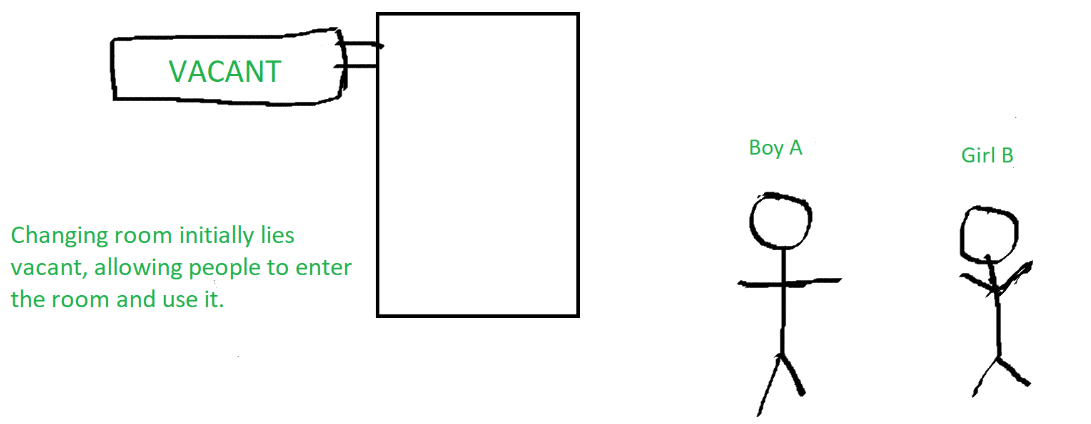

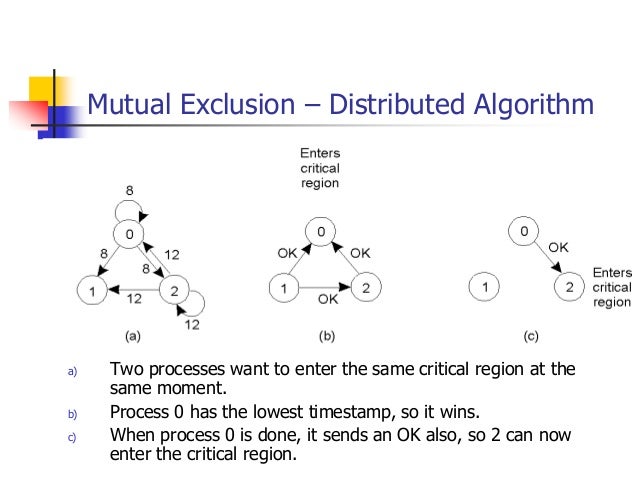

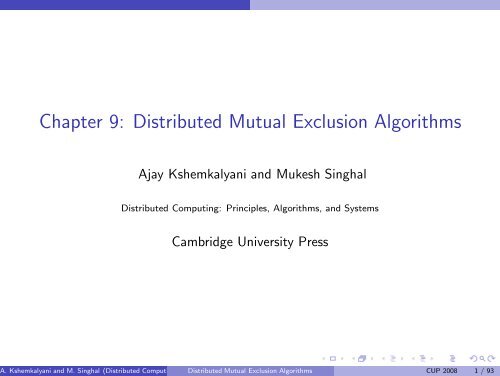

Post a Comment for "Mutual Exclusion In Distributed System"